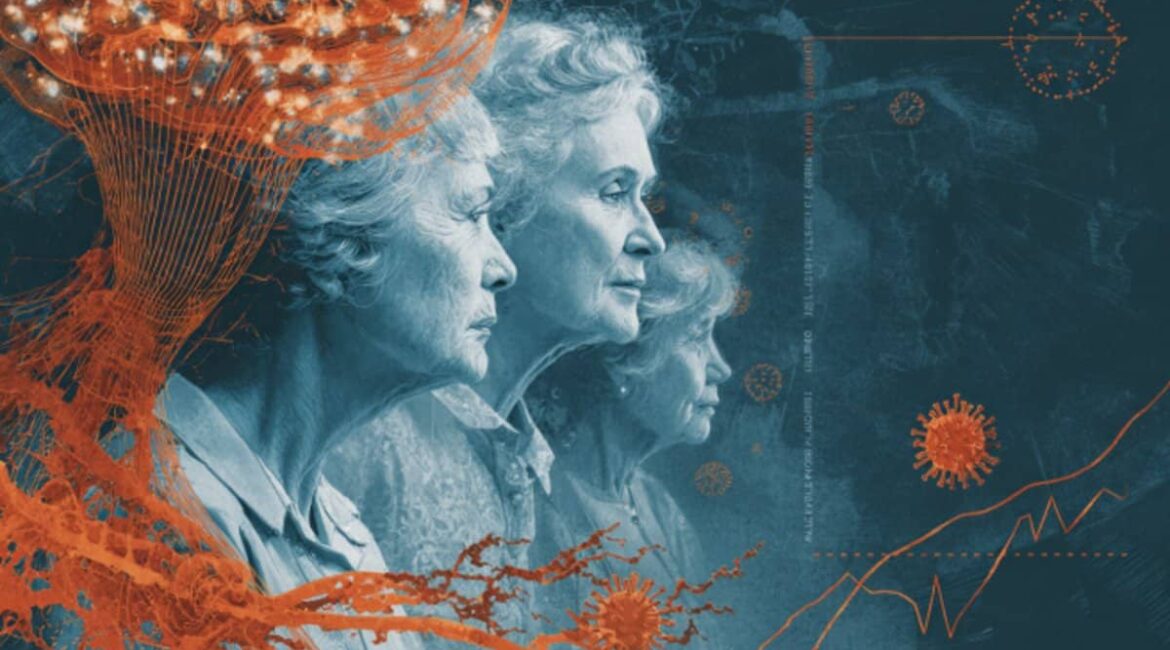Summary: A new study finds that prior herpesvirus infections are linked to a faster age-related increase in blood biomarkers associated with dementia, even in cognitively healthy women. Researchers measured five key biomarkers in 167 women and found that seropositivity for HHVs doubled the rate of biomarker accumulation compared to those without prior infection.
The strongest viral associations were seen for Epstein-Barr virus and HHV6, with amyloid-beta and phosphorylated tau levels most affected. These findings support the hypothesis that chronic viral infections may accelerate neurodegeneration and raise dementia risk independently of genetic factors.
Key Facts
- Biomarker Acceleration: HHV-seropositive women showed a 2.15× faster rise in dementia-related blood biomarkers with age.
- Viral Impact: The strongest associations were seen with HHV4 (Epstein-Barr) and HHV6.
- Genetic Independence: The effects of HHV infection on biomarkers were independent of APOE4 genotype.
Source: Neuroscience News
New research sheds light on a possible connection between common herpesvirus infections and the early biological changes that precede dementia.
Scientists found that cognitively healthy women who tested positive for human herpesviruses (HHVs) showed a significantly steeper age-related increase in blood biomarkers associated with Alzheimer’s disease compared to those without prior viral exposure.
These findings support growing evidence that infections may accelerate neurodegenerative processes — long before cognitive symptoms appear — highlighting the importance of understanding infection’s role in dementia risk.
The study analyzed blood samples from 167 cognitively unimpaired women aged 26 to 98, measuring levels of key dementia biomarkers — amyloid-beta 40 and 42 (Aβ40, Aβ42), the Aβ42/Aβ40 ratio, and phosphorylated tau proteins (pTau181, pTau217).
While all markers except the Aβ42/Aβ40 ratio increased with age overall, the increase was more than twice as high in women who were seropositive for one or more HHVs.
Among the viruses, Epstein-Barr virus (HHV4) and HHV6 were most strongly associated with elevated biomarker trajectories, followed by herpes simplex virus (HHV1). The APOE4 genetic risk factor did not significantly influence these patterns, suggesting that viral effects may operate independently of genetic predisposition.
Why does this matter? These biomarkers — detectable years before symptoms — are considered indicators of underlying neurodegeneration. The discovery that viral infection correlates with faster biomarker accumulation strengthens the hypothesis that infections act as a trigger or accelerator for Alzheimer’s and other dementias.
Interestingly, researchers note that while amyloid-beta and tau are central to dementia pathology, they also have antimicrobial properties, raising the possibility that their buildup in infected individuals may initially serve as a protective response against persistent viruses — a response that eventually becomes pathological.
These findings add weight to calls for broader research into the infectious origins of dementia and could even open avenues for preventive strategies, such as vaccines or antiviral therapies, in at-risk individuals.
Further studies are needed to determine if these findings extend to men and to other populations, and whether targeting chronic infections could slow or prevent dementia onset.
About this neurology and dementia research news
Author: Neuroscience News Communications
Source: Neuroscience News
Contact: Neuroscience News Communications – Neuroscience News
Image: The image is credited to Neuroscience News
Original Research Open access.
“Human herpes viruses are associated with steeper age-dependent increases of serum biomarkers for dementia in cognitively unimpaired women” by Lisa M. James et al. Scientific Reports
Abstract
Human herpes viruses are associated with steeper age-dependent increases of serum biomarkers for dementia in cognitively unimpaired women
Blood biomarkers for dementia are being increasingly used for screening and possibly early detection of dementia in cognitively unimpaired (CU) people.
Here we measured blood serum levels of 5 dementia-related biomarkers (Aβ1–40 [Aβ40], Aβ1–42 [Aβ42], Aβ42/Aβ40 ratio, phosphorylated Tau181 [pTau181], and phosphorylated Tau217 [pTau217]) and determined the seroprevalence of 6 HHV (HHV1, HHV2, HHV3, HHV4, HHV5, HHV6) in 345 samples drawn at successive visits from 167 CU women 26–98 years old.
All biomarkers except for Aβ42/Aβ40 increased significantly with age, particularly in those who were HHV seropositive. With respect to the biomarkers, the increase was highest for Aβ40 > Aβ42 > pTau217 > pTau181, and, with respect to HHV, the increase was highest for HHV4 > HHV6 > HHV1 > HHV2 > HHV5 (HHV3 was seropositive in all samples).
Overall, the average normalized rate of increase of biomarkers with age was 2.15 × higher in the HHV seropositive vs. seronegative groups (P = 0.003, paired samples t-test). The presence of apolipoprotein E4 (apoE4) genotype did not have a significant effect on those rates.
These findings document a link between prior viral infection and dementia-related blood biomarkers, adding support to the HHV hypothesis in developing dementia, irrespective of apoE4 allele presence.
